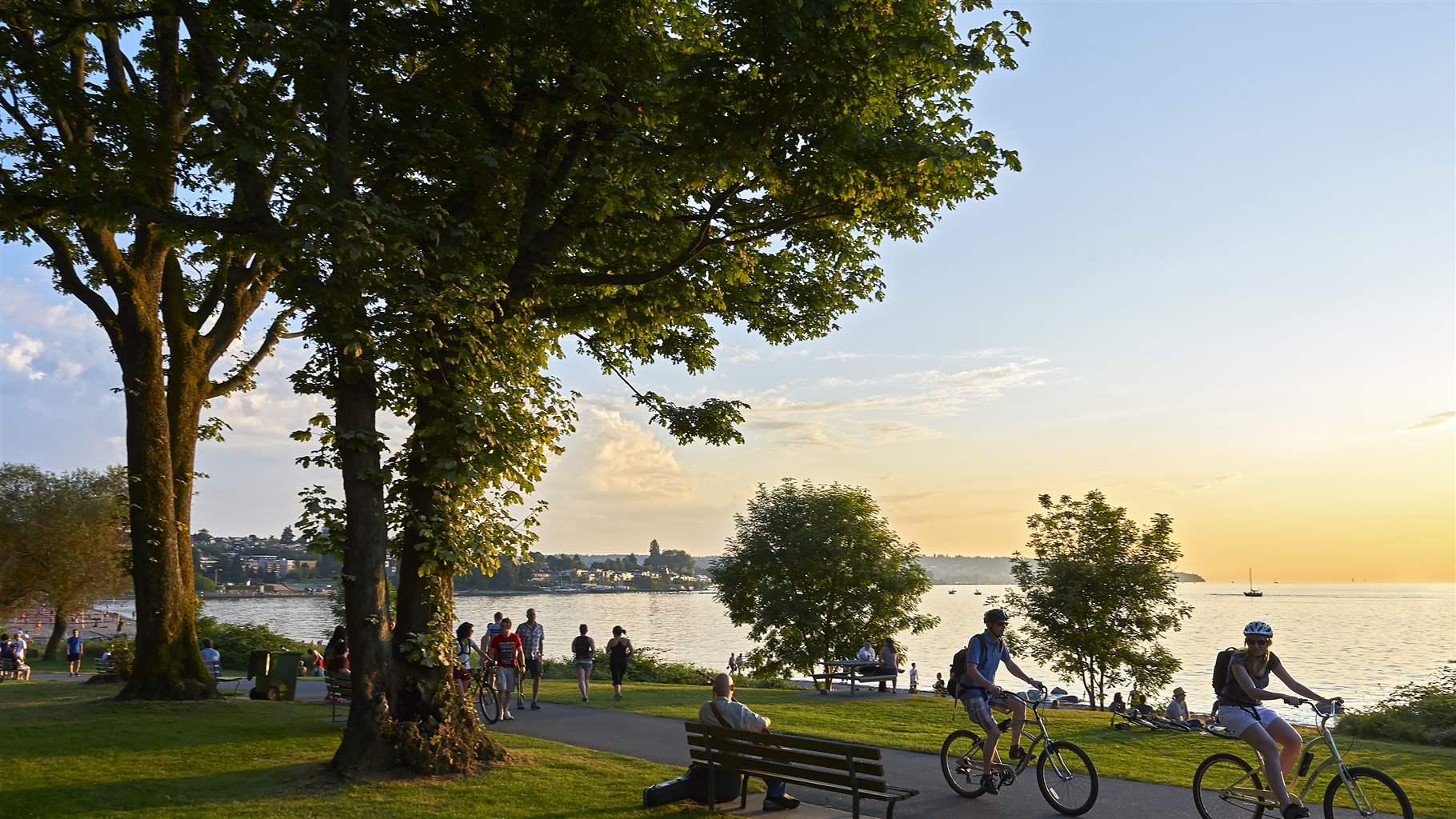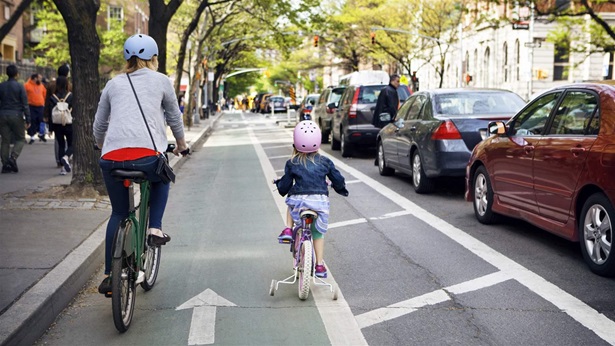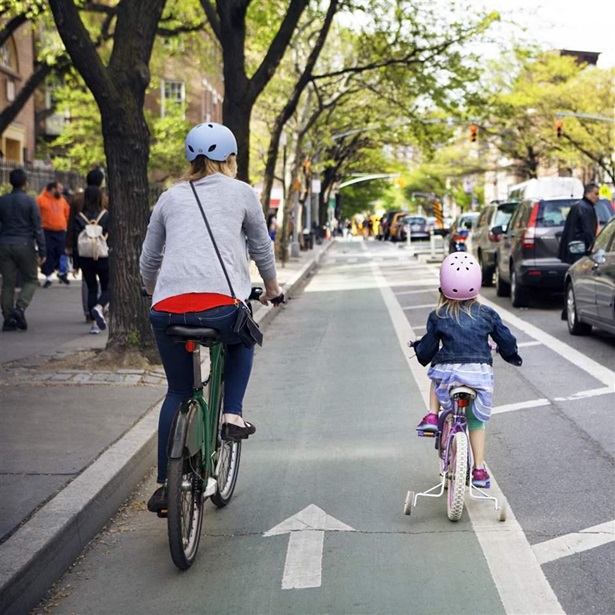Organizations Across Sectors Partner to Improve Health Equity in Communities
New grant supports projects addressing food and water security, green space, and language access

Editor’s note: A previous version of this article did not correctly identify the Landscape Architecture Program at Thomas Jefferson University as the Citizens Planning Institute’s partner in Philadelphia.
The COVID-19 pandemic and rise of social movements in 2020 underscored the importance of identifying concrete policies and practices to improve health equity—the guiding principle that disparities in health outcomes caused by factors such as race, income, or geography should be addressed and prevented, providing opportunities for all people to be as healthy as possible. Organizations are partnering across sectors—from built environment to social services—to address this urgent need.
The Health Impact Project, a collaboration of the Robert Wood Johnson Foundation and The Pew Charitable Trusts, is supporting five collaborative projects over the next year to inform policy decisions with health and equity implications. Here, members of each partnership explain what they expect success to look like at the conclusion of the grant period.
Physical and social infrastructure for disadvantaged communities
Disadvantaged unincorporated communities (DUCs) are neighborhoods that, because of government neglect and disinvestment, may face issues such as lack of recognition and representation in local decision-making and little access to basic services such as water. DUCs often experience higher rates of pollution and health disparities because of unhealthy land uses, such as heavy industry and related traffic.
The Leadership Counsel for Justice and Accountability and California Strategic Growth Council are developing a model to change the way California state agencies invest in the physical and social infrastructure needed to revitalize DUCs. At the end of the grant period, success will include the “creation and sharing of this model with state agencies; at least one completed DUC application for a state-level funding program; improved data integrity and access on DUCs; and increased collaboration among community-based organizations, community leaders, local agencies, and state agencies to systematically address infrastructure and service needs in DUCs.”
Increased safety net access for linguistically marginalized people
In California, linguistically marginalized communities—speakers of Indigenous and minority languages who have limited English proficiency—can face barriers to accessing critical government safety net services and benefits. To address this, California Rural Legal Assistance Inc. has partnered with the California Department of Social Services to develop a toolkit for California state agencies to improve language access services for non-English speaking communities. They say success will look like “a greater understanding of the challenges that California state agencies face when providing services to linguistically marginalized communities, spanning from logistical and financial constraints to the more complex internal behavioral and attitudinal challenges that people have about making services available in languages other than English.” In addition, the toolkit will be accessible, designed with heavy involvement from community stakeholders, easily adapted for other state agencies’ use, and instructional for anyone interested in reviewing existing challenges in serving linguistically marginalized communities. It will also highlight opportunities where additional investment or research is needed to meet their growing needs.
Turning vacant lots into green space
COVID-19 has underscored the importance of outdoor spaces as community gathering spots for socializing and exercise; however, Philadelphia and other cities struggle to provide residents with equitable access to parks and other green spaces. Low-income neighborhoods and communities of color are most frequently excluded from the health and wellness benefits of green space.
The Landscape Architecture Program at Thomas Jefferson University (TJU) is working with the Citizens Planning Institute (CPI) within the city planning commission to help facilitate the transformation of vacant lots into community green spaces. The organizations will test-drive the “Park in a Truck” toolkit created by TJU that outlines requirements for purchasing, insuring, and redeveloping lots, which will support the city’s goal to ensure that every resident has access to green space within a 10-minute walk. Success will include “a revamped website, a plan for toolkit distribution and stewardship, and the coordination of a class for current CPI students and alumni about the Park in a Truck project.”
School-based food programs when schools are closed
Feeding America estimates that almost 1 in 4 Louisiana children live in households that are food insecure. The Louisiana Partnership for Children and Families is working with the Louisiana Department of Education’s office of child nutrition to create policies that support a food distribution infrastructure to reach food insecure children, with school buildings as the hubs. These policies and guidance documents will connect school-based food programs with community-based nonprofit partners that can support food procurement and distribution outside of school hours, especially during crises such as pandemics and extreme weather events. Success will include “making information so readily available and communicated so clearly that new, qualified partners can begin feeding programs where there currently are none and get nutritious food into the hands of the children who need it most.”
Supporting traditional agriculture through incentivized rainwater harvesting
Residents of the Pueblo of Zuni in western New Mexico maintain vibrant agricultural traditions that have sustained them for millennia, but they face many challenges to continuing these healthy traditions. The Zuni Youth Enrichment Project (ZYEP), Zuni Utility Department (ZUD), and Zuni Public School District (ZPSD) are partnering to strengthen Zuni’s water conservation practices and revitalize sustainable agriculture and food sovereignty—the right to healthy and culturally appropriate food produced through ecologically sound and sustainable methods, and to define one’s own food and agriculture systems. The program will promote rain harvesting for home gardens and school sites through ZYEP’s Family Garden and Rain Harvest Initiative, ZUD’s Rain Barrel and Rain Harvest Reward program, and ZSPD’s Rain Harvest for School Gardens Wellness Policy. Success will include “elevating Zuni voices, values, and visions by designing community-wide initiatives that link agriculture, nutrition, and the water resources needed to sustain them.”
All five projects are working to address issues that were exacerbated by the pandemic, but that existed prior to it and will persist long after it has passed. Partnerships such as these are key to advancing equity and improving health outcomes for communities over time.
Bethany Rogerson is a senior manager and Emily Bever is a senior associate with The Pew Charitable Trusts’ Health Impact Project.


America’s Overdose Crisis
Sign up for our five-email course explaining the overdose crisis in America, the state of treatment access, and ways to improve care
Sign up

Groups to Reduce Housing Insecurity Among Pregnant People


Land Use and Community Planning Promotes Health Equity











